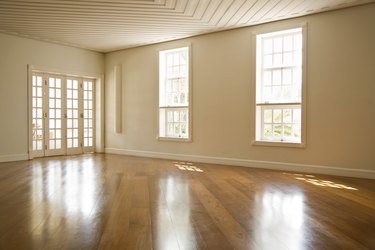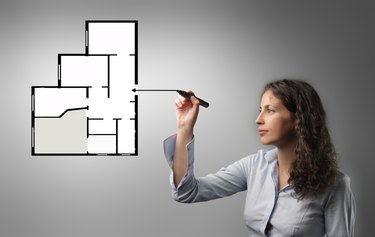
Hardwood flooring can increase your home's value. While manufacturers have made hardwood floors easy to install, you do need to take a few steps to prepare the room to make installation easier. Your first task is preparing the surface that the hardwood will lie on, which means deciding whether you need to use felt paper under the hardwood.
Types of Subfloors
Video of the Day

Most homes either have cement, tile or wood subflooring. Apply a layer of plastic film or sheeting over cement and tile floors to keep moisture out. For wood floors, do not use a plastic moisture barrier, as this can promote mold growth.
Video of the Day
If your room currently has carpet, you must remove it before installing hardwood flooring. You can install hardwood floors directly over most other types of floors.
When to Use Felt Paper

Felt paper is installed under hardwood flooring to provide an extra layer of moisture protection and also to dampen sound. You will need to install it under your wood floors if a padding is not already attached to the hardwood planks. Many models of hardwood planks have dampening foam already attached. If this is the case with your flooring, you can lay it down directly over your plastic sheeting or wood subfloor, or your previous floor.
If your hardwood planks do not have foam attached, you will need to lay down the dampening material yourself. The National Wood Flooring Association recommends using either 15-pound or 30-pound asphalt-saturated felt paper.
While either product will work, the installation is different depending on which paper you use. When using 15-pound asphalt paper, to unroll the paper across the length of your floor, overlapping the seams by about 3 inches and stapling together.
When using 30-pound asphalt paper, you should not overlap the seams. Instead, butt the seams together, as 30-pound paper is simply too thick to be overlapped.
The choice of 15- or 30-pound felt paper is up to you. Since 30-pound paper is quite a bit thicker, you might want to use underneath upstairs flooring applications, where the sounds of footsteps can be heard more frequently throughout the house.